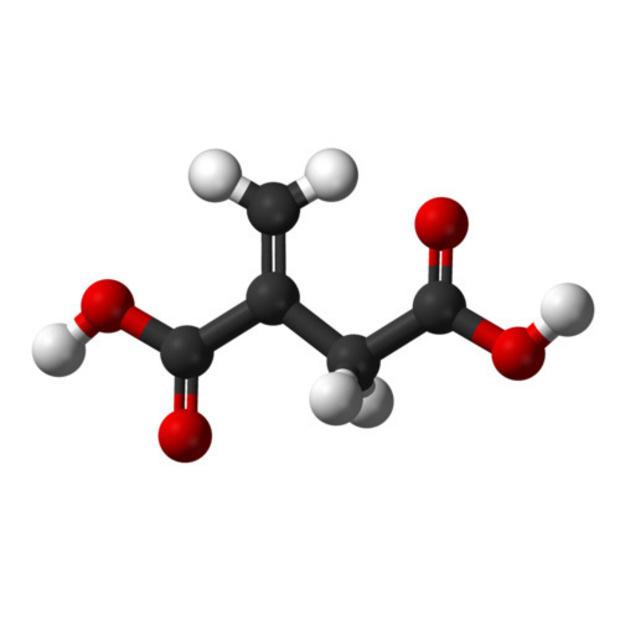Unraveling the Chemical Properties and Production Processes of Itaconic Acid

Itaconic Acid: A versatile platform chemical gaining significance
Production and Applications of Methylenesuccinic Acid
Itaconic acid is produced through fermentation of carbohydrates like glucose, sucrose or molasses by fungi species Aspergillus itaconicus or Ustilago maydis. The process involves fungi growth in aqueous medium containing nutrients and sugars followed by acidification to extract methylenesuccinic acid. The medium is then filtered and purified using ion-exchange or crystallization to achieve high purity methylenesuccinic acid. Some key players involved in commercial production of methylenesuccinic acid include Itaconix Corporation, Qingdao Kehai Biochemistry Co., Ltd. and Zhejiang Guoguang Biochemistry Co., Ltd. Current global production capacity of methylenesuccinic acid stands at over 50,000 tons per year.
Uses in Polymers and Specialty Chemicals Manufacturing
Being a dicarboxylic acid, methylenesuccinic acid serves as an important building block chemical for polymers and specialty chemicals. It finds significant usage in manufacturing of synthetic latex, superabsorbent polymers, chelating agents and copolymers for diverse applications. As a comonomer for acrylate or methacrylate polymers, methylenesuccinic acid improves water-absorbency and acid-base properties. Its copolymers with acrylates and styrene are used in paper coatings, adhesives, thickeners and dispersants. Methylenesuccinic acid also acts as a complexing agent for heavy metal ions and is used in industrial and agricultural chelating formulations.
Potential in the Bio-Based Chemicals Sector
With the increasing focus on sustainability and circular bioeconomy, methylenesuccinic acid has emerged as a promising platform chemical that can be produced from renewable biomass. Being biodegradable and non-toxic in nature, methylenesuccinic acid derivatives expand the portfolio of bio-based alternatives for petrochemical derived polymers, resins and intermediates. This offers new opportunities for green chemical and bio-plastics manufacturers. Leading R&D is ongoing to develop itaconate-based polymers with high performance for diverse end-use applications like packaging, textiles, coatings etc. Major industrial players have also announced capacity expansion plans indicating growing commercialization of methylenesuccinic acid in the bio-economy sector.
Opportunities in Synthetic Latex Market
Synthetic latexes containing itaconic acid possess advantages like improved water-resistance, adhesion to polar substrates and flexibility. They are used on a large scale in paper coatings, non-woven fabrics, adhesives, carpet backings and paint formulations. Methylenesuccinic acid serves as an important co-monomer for styrene-butadiene rubber and acrylic latexes employed in theseapplications. With rising paper production and consistent growth in global latex market projected at over 4% annually, there lies tremendous scope for increased methylenesuccinic acid consumption. Leading latex producers are actively pursuing R&D to augment the usage of methylenesuccinic acid co-polymers in their product portfolio. This growing demand from the expansive synthetic latex industry is a major factor driving the methylenesuccinic acid market.
Utilization in Chelating Agent Formulations
As an excellent chelating agent, methylenesuccinic acid finds usage in various sequestering blends employed across industries like agriculture, oil & gas, metal processing, water treatment etc. The demand from these sectors has been on an upswing over the past few years. It effectively binds metal ions like calcium, magnesium, iron which cause scaling and corrosion issues. Methylenesuccinic acid -based formulations are incorporated in agricultural micronutrient mixtures, hydraulic fracturing fluid systems, metal cleaning solutions, boiler water treatments, municipal and industrial wastewater handling. With its non-toxic profile and capability to replace phosphates, methylenesuccinic acid is increasingly replacing conventional chelants. This positive outlook in end-use markets translates to new prospects for methylenesuccinic acid producers.
Potential in Novel Therapeutic Applications
Novel applications of itaconic acid are being researched in the medical field as well. Some studies have revealed its anti-fungal, antibacterial and anti-viral properties. Research is in progress to develop itaconate derivatives with enhanced bioactivity against multi-drug resistant pathogens. Methylenesuccinic acid is also known regulate inflammatory responses in human body by inhibiting certain enzymes. This makes it a potential candidate for developing novel anti-inflammatory pharmaceuticals. Exploratory trials indicate it may assist in managing conditions like diabetes, neurodegeneration and cancer. Though in early stages, these therapeutic applications open up completely new frontiers for methylenesuccinic acid if successfully commercialized in future.
To conclude, with its unique structural attributes and bio-based origin, methylenesuccinic acid has emerged as a very important specialty platform chemical with broad scope across industries. Backed by steady growth in end-use markets and rising sustainability emphasis, the methylenesuccinic acid industry is rightly positioned for significant expansion globally in the coming years. Ongoing R&D and commercial initiatives also point towards novel product concepts and applications further accentuating the industrial relevance of this multifaceted organic acid.
- Art
- Causes
- Crafts
- Dance
- Drinks
- Film
- Fitness
- Food
- Игры
- Gardening
- Health
- Главная
- Literature
- Music
- Networking
- Другое
- Party
- Religion
- Shopping
- Sports
- Theater
- Wellness
- IT, Cloud, Software and Technology


